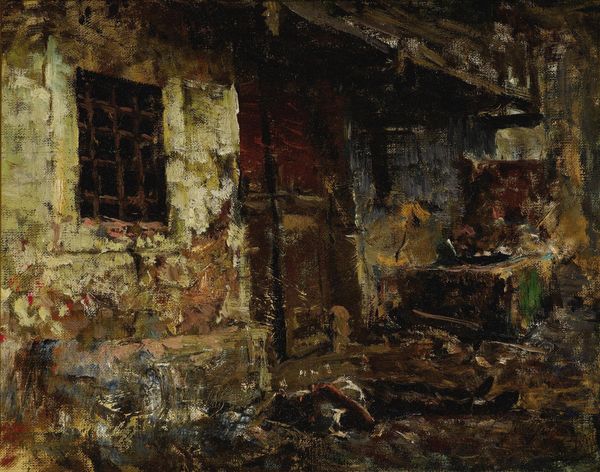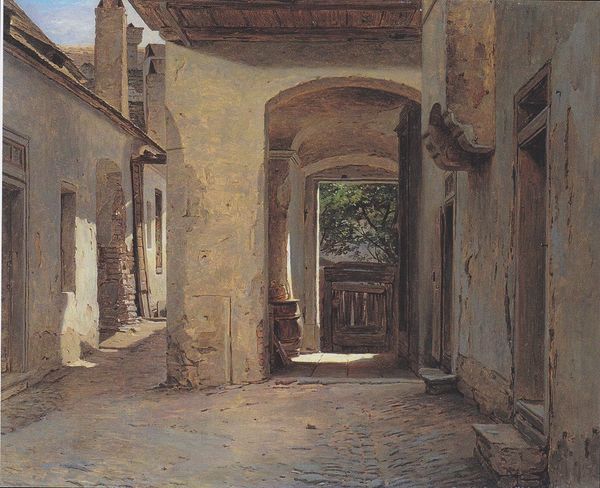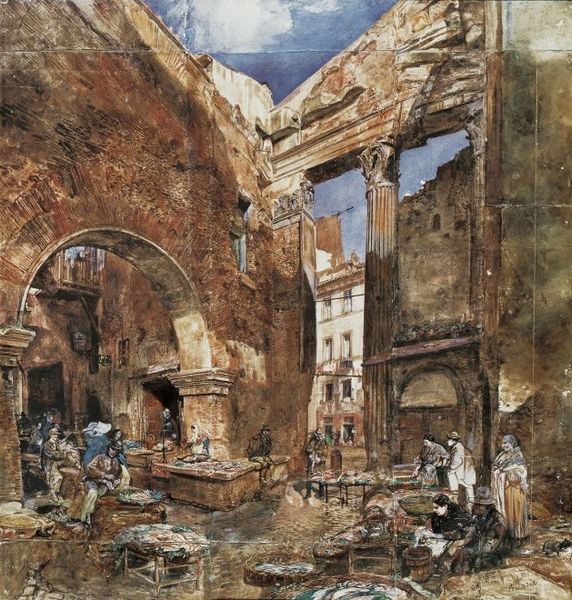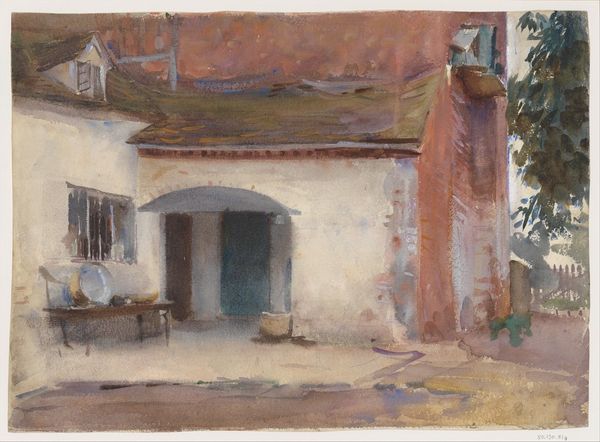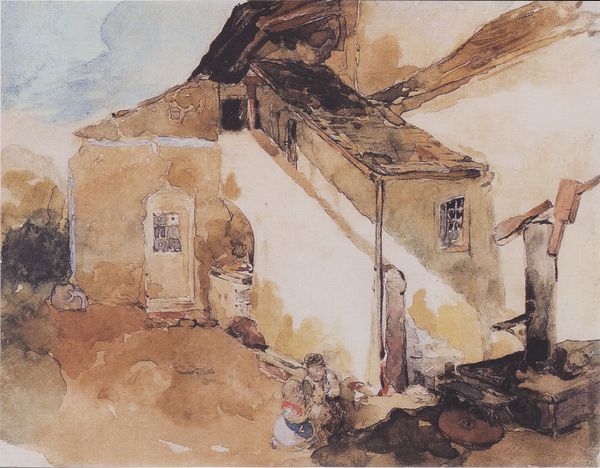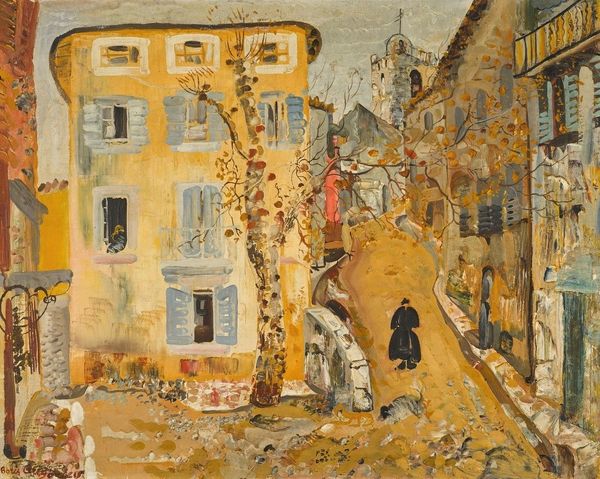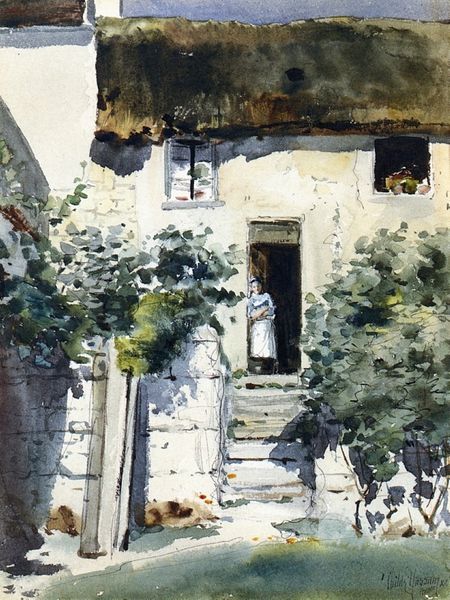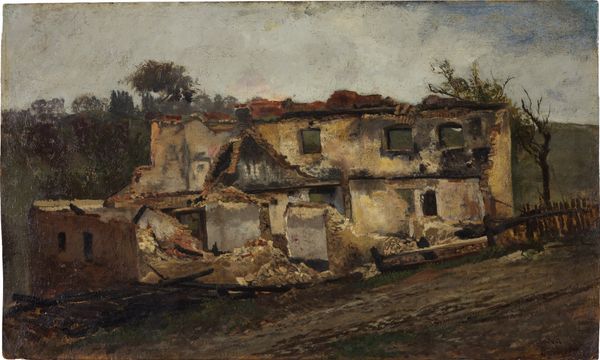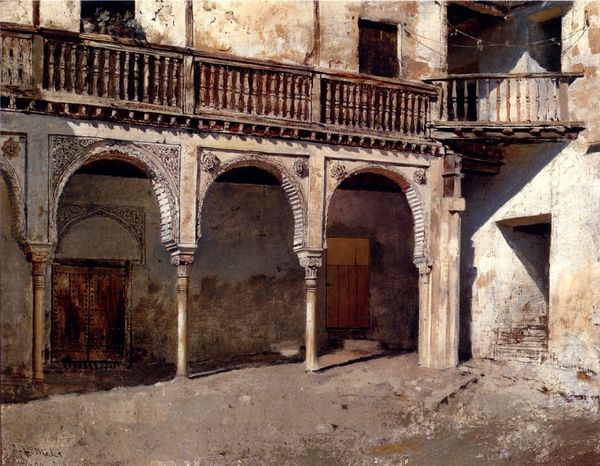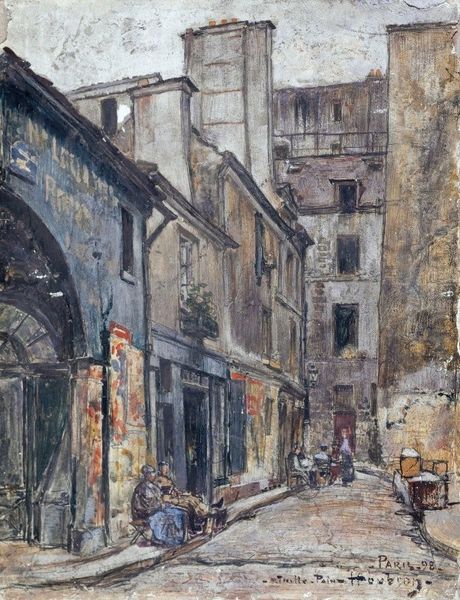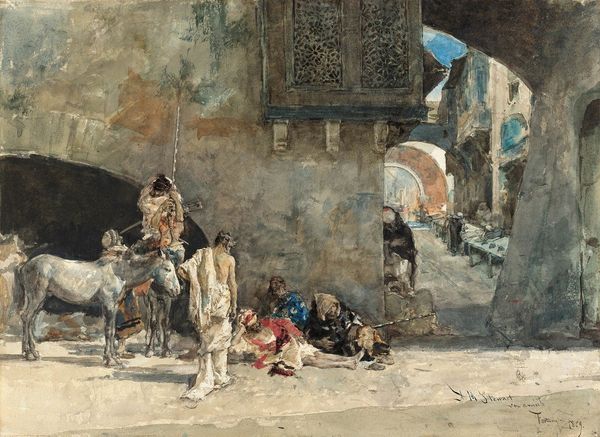
#
abstract painting
#
abandoned
#
house
#
charcoal drawing
#
possibly oil pastel
#
oil painting
#
derelict
#
acrylic on canvas
#
underpainting
#
painting painterly
#
watercolor
#
building
Dimensions: 31.11 x 38.73 cm
Copyright: Public domain
Curator: Edwin Lord Weeks, though the exact date eludes us, painted what he titled "Courtyard in Morocco," a composition that immediately gives an impression of age and disrepair. Editor: Absolutely. The peeling plaster, the exposed brick—it's almost a visual elegy. There’s a palpable sense of abandonment hanging in the air, almost as though the space is echoing with forgotten voices. Curator: Weeks was quite enamored with capturing the exotic. In his time, the late 19th century, the West was intensely interested in images from North Africa. This particular work plays into that fascination with the "other," focusing on architecture that feels ancient, untouched by the modern world. Editor: It makes you wonder about the choices, the symbols the artist wants us to contemplate. Consider the scales hanging within the covered portion of the courtyard—a potent emblem, suggesting justice or perhaps commerce. The implication changes everything. Justice denied or commerce abandoned. It transforms this from a mere painting into an inquiry about value, both material and moral. Curator: The romanticizing of a declining or static culture by Western artists often overlooks the economic realities or socio-political constraints affecting these locales. By focusing solely on picturesque decay, there is the risk that the works reinforce an Orientalist perspective, seeing these cultures only in terms of the past, never the present or future. Editor: That's undeniable, the artistic framing carries its own politics. Still, I see value in uncovering the layers, of showing what the marks of time have rendered on a place. Every fissure, every discolored patch tells a silent story, not only of history but of shared humanity. The melancholic feel, however charged with exoticizing perspectives, connects because it presents aging as a truth. Curator: Ultimately, "Courtyard in Morocco" serves as a potent reminder of the intertwined relationship between art, history, and the continuing complexities of cultural representation. Editor: And, at the very least, perhaps it can compel us to look closer, beyond just the surface appeal of a bygone scene. To engage with the artwork with both an emotive sensitivity and analytical awareness is crucial for art and culture.
Comments
No comments
Be the first to comment and join the conversation on the ultimate creative platform.
